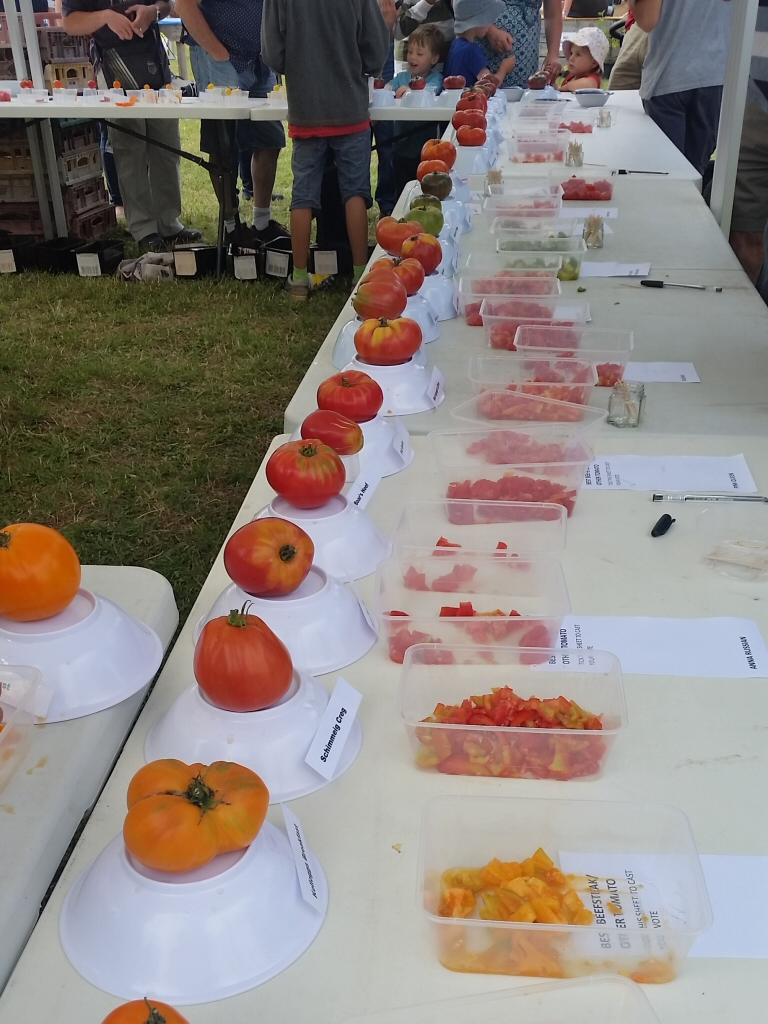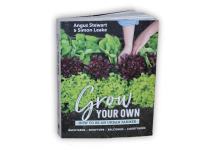How do I grow tomatoes?
Spring is a great time to think about planting tomatoes. The amazing taste and texture of tucking into a fully vine-ripened tomato, straight from the bush, is one of life’s joys. If you have kids or grandkids, not only can they also share in the fun of harvest, they will also learn how they are able to grow their own food, and how much better it can taste.
There are many different tomato varieties available ranging from large fruited types such as Oxheart to tiny types such as grape and cherry tomatoes. Some types are much easier to grow in the home garden than others.
Tomato varieties for the home garden
Egg/Italian/Roma tomato
The characteristic pear shape makes this an instantly recognisable tomato type with all three names being used interchangeably. This style of tomato originates in Italy and not surprisingly is very well suited for cooking rather than being eaten fresh. It has a rather fleshy but drier interior with few seeds but is relatively easy to grow, particularly in warmer climates. The less watery flesh makes it a great choice to use for sauces and preserves and for tomato paste and sun dried tomato.
Vine-ripened tomato
Increasingly we are seeing in supermarkets and fruit shops the category ‘vine-ripened’ tomatoes. Rather than being a specific variety this term simply acknowledges the fact that the fruits have been left on the plant to develop their full flavour and texture. This trend has no doubt appeared in response to the common claim that tomatoes have lost their flavour.
Red Cherry tomato
This type refers to a group of small-fruited varieties that are perhaps a little bit larger than the average cherry. They are an excellent choice for the home garden due to their outstanding resistance to the many pests and diseases that can appear in a home-grown crop. They also have excellent flavour.
Yellow Tear Drop tomato
Another small-fruited type with a novel shape and colour, this variety is another excellent choice for the home garden. The only drawback with it is that it tends to have a rather sprawling growth habit and will need plenty of support in the form of a trellis. It is unbelievably prolific and the fruits make a colourful addition to summer salads.
Grape tomato (small and oval variety)
Grape types have the smallest fruits of all the commonly available tomatoes being approximately half the size of a cherry tomato. They are also incredibly easy to grow in the home garden where they are terrific for encouraging children into gardening as they can pick and eat the grape tomatoes straight from the bush – the ultimate in fast food!
Oxheart tomato
A classic large-fruited group of varieties that have good flavour and thick flesh. It is more suitable for cooler climates than many other types. It is more susceptible to pests and diseases in the home garden than the smaller-fruited types such as cherry and grape tomatoes but a good choice if you want to grow a large-fruited type.
Truss tomato
Like ‘vine-ripened’ this is not an actual type of tomato but rather refers to the way the fruits are presented to the consumer. A truss is simply a compact cluster of fruits and is the way in which tomatoes are borne on the bush. Rather than picking the fruits individually a whole truss can be picked and sold, although the youngest fruits may not be fully ripe.
Cultivating tomatoes in the home garden
Tomatoes grow through the warmer months of the year and will not withstand frost so make sure you allow for this in colder climates when deciding when to plant. Starting plants off in a pot grown against a sunny wall will not only minimise any chance of frost, but the radiant heat at night-time will give your new planting an extra kick along. Once all danger of frost has passed it can be either transplanted into a larger container or into a final position in the garden.
The simplest option for getting started is to purchase a seedling plant either as part of a group in a punnet or as a somewhat larger plant in an individual container. Tomatoes are very rapid growers and require plenty of feeding as well as a reasonably well-drained soil. If you are growing them in soil best results will be obtained by digging in a 5-10cm layer of well-rotted animal manure or compost. Otherwise pot culture is a perfect option and for best results choose a potting mix that conforms to the premium Australian standard, as this will have the extra fertiliser that tomatoes require to thrive. For best results it is desirable to liquid fertilise your plant every couple of weeks with a product designed to boost flowering and fruiting, as food high in nitrogen will stimulate too much leaf growth.
Pests and diseases of tomatoes
Pests and diseases are the biggest problem, especially with large-fruited types. There are various multi-purpose products available at your local garden centre that will cover the common fungal and insect problems that you are likely to encounter. A far better approach, however, is to stick to the smaller-fruited types such as grape and cherry tomatoes that are largely problem-free.
One problem that is often mistaken for a fungal problem is blossom end rot. This is when the fruit develops a brown misshapen area on the opposite side to the stem, and is symptomatic of a calcium deficiency. The cause of the deficiency is mainly from irregular watering, but can also be from excess nitrogen or soil salts, or from the wrong pH, which can cause calcium to become unavailable to the plant. The fruit that have developed the brown patch will need to be discarded as they tend to rot, but if there are further fruit on the plant, then adding some calcium to the soil may help, as well as ensuring a more consistent watering pattern.
Remember that the greatest advantage of tiny tomatoes is that they do not generally require any pesticides and so you can enjoy them even more knowing that they are completely poison free, their small size means they grow more quickly giving less time for bugs to attack.
A final tip is to let the tomatoes ripen fully to develop their best flavor. You can pick them just before you are ready to eat them. If you are battling things like birds or bugs that would like to eat your fully vine ripened tomato, you can pick your tomato when they begin to colour up, and ripen them on a sunny window sill. They may not be quite as flavoursome as a vine ripened fruit, but they go pretty close.
Further reading on tomatoes in the home garden, see my article on Cherry tomatoes too >>>>
For lots of information on home growing vegies, worm farming and lots more, check out the book
“Grow Your Own”….buy it here>>>>


